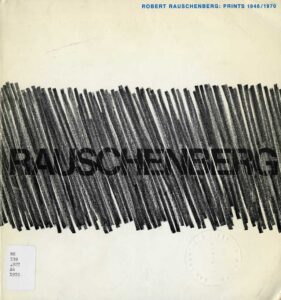Ownership History
Private collection1
John Bransten, San Francisco, ca. 1965
San Francisco Museum of Modern Art, gift of John Bransten, 1982
- Sales records kept by Universal Limited Art Editions indicate that the print was purchased by “Orlofsky’s friend.” It is likely that the Orlofsky in question is art collector Myron Orlofsky (1928–1976).
Exhibition History
8th Selection of the Society for the Encouragement of Contemporary Art, San Francisco Museum of Art, November 30–December 26, 1965.
Extending the Perimeters of Twentieth-Century Photography, San Francisco Museum of Modern Art, August 2–October 6, 1985.
In addition to appearing in the special exhibition listed above, Front Roll was shown in SFMOMA’s galleries in 1974, 1976, 1985, and 2008 as part of a series of rotating presentations of the permanent collection.
This listing has been reviewed and is complete as of August 31, 2016.
Publication History
Cleve Gray, “Tatyana Grosman’s Workshop,” Art in America 53, no. 6 (December 1965–January 1966): 85 (ill.).
Edward A. Foster, Robert Rauschenberg: Prints 1948/1970 (Minneapolis: Minneapolis Institute of Arts, 1970), n.p.
Esther Sparks, Universal Limited Art Editions: A History and Catalogue: The First Twenty-Five Years (Chicago: Art Institute of Chicago, 1989), 226, 436 (ill.).
Walter Hopps and Susan Davidson, eds., Robert Rauschenberg: A Retrospective (New York: Solomon R. Guggenheim Museum, 1997), 380.
Janet Bishop, Corey Keller, and Sarah Roberts, eds., San Francisco Museum of Modern Art: 75 Years of Looking Forward (San Francisco: San Francisco Museum of Modern Art, 2009), 150.
This listing has been reviewed and is complete as of August 31, 2016.
